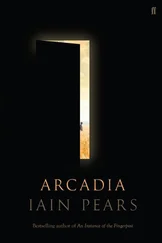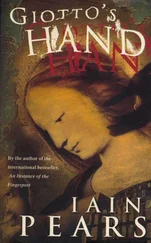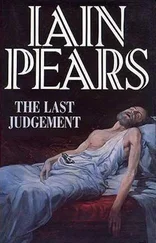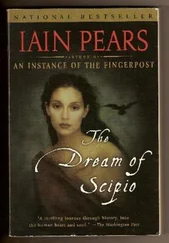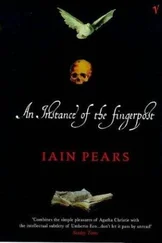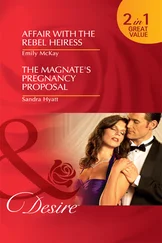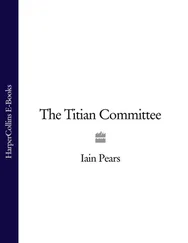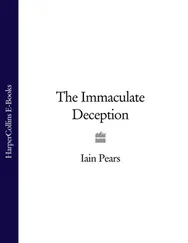Iain Pears - The Raphael Affair
Здесь есть возможность читать онлайн «Iain Pears - The Raphael Affair» — ознакомительный отрывок электронной книги совершенно бесплатно, а после прочтения отрывка купить полную версию. В некоторых случаях можно слушать аудио, скачать через торрент в формате fb2 и присутствует краткое содержание. Город: London, Год выпуска: 1990, ISBN: 1990, Издательство: Victor Gollancz, Жанр: Исторический детектив, на английском языке. Описание произведения, (предисловие) а так же отзывы посетителей доступны на портале библиотеки ЛибКат.
- Название:The Raphael Affair
- Автор:
- Издательство:Victor Gollancz
- Жанр:
- Год:1990
- Город:London
- ISBN:978-0-575-04727-3
- Рейтинг книги:3 / 5. Голосов: 1
-
Избранное:Добавить в избранное
- Отзывы:
-
Ваша оценка:
- 60
- 1
- 2
- 3
- 4
- 5
The Raphael Affair: краткое содержание, описание и аннотация
Предлагаем к чтению аннотацию, описание, краткое содержание или предисловие (зависит от того, что написал сам автор книги «The Raphael Affair»). Если вы не нашли необходимую информацию о книге — напишите в комментариях, мы постараемся отыскать её.
The Raphael Affair — читать онлайн ознакомительный отрывок
Ниже представлен текст книги, разбитый по страницам. Система сохранения места последней прочитанной страницы, позволяет с удобством читать онлайн бесплатно книгу «The Raphael Affair», без необходимости каждый раз заново искать на чём Вы остановились. Поставьте закладку, и сможете в любой момент перейти на страницу, на которой закончили чтение.
Интервал:
Закладка:
‘And it seemed unlikely,’ Bottando continued, staring at the ceiling, ‘that two such eminent artistic types should be within spitting distance of each other without meeting. A brief phone call confirmed it. Your supervisor had been staying with Tommaso while he read the paper.
‘So that’s piece number one. Tommaso had the chance, at least, of knowing about that picture long enough in advance to get a forgery made. I couldn’t find any way that Sir Edward might have known. Tommaso investigates, and discovers you’re wrong. But he also goes through the evidence and realises that, although there is nothing under there, there should be. You said the same yourself. If someone uncovered the painting and found what looked like a Raphael, they would be predisposed to believe it was genuine.
‘But he’s no fool. You can’t produce any old rubbish and expect to have it accepted. He needed an expert. And who does he think of? Why, good old Professor Morneau, the man who taught him all about painting when he was an art student in Lyons. He found the right man: Morneau was really good. He bought that old painting and used the others for practice. Then he cleaned off the central portion and painted a Raphael, along the lines you’ve described. Put the fake Mantini on top, dirtied and aged it, switched the pictures when no one was looking. Exit Morneau.
‘Of course, I was just a little suspicious of Tommaso anyway, but I couldn’t see my way past the fact that Byrnes was the most likely beneficiary, and that the director had a cast-iron alibi on every occasion. Flavia’s view that Byrnes had probably been his own employer seemed most likely.
‘Things really started crystallising when Byrnes rang me up, a little hot under the collar after Argyll had effectively told him that we knew the picture was a fraud, and that he was going to have to refund all the money.’ He paused and turned to the Englishman, ‘Why did you do that, by the way?’
Flavia looked at Argyll disapprovingly, and he looked sheepish again. ‘As I told Flavia, it seemed a good idea at the time. The idea was that Sir Edward would rush out to Siena, try to destroy the picture, and would get himself arrested. I suppose I owe you an apology,’ he said to Byrnes, who acknowledged it graciously.
‘Very good idea,’ said Bottando with approval, surprising both Flavia and Argyll almost equally. ‘Wrong man, of course, but sound in principle. As you know, it was the same sort of plan as the one I adopted.
‘In fact,’ he continued, resuming his monologue, ‘it was just as well you did go and see him. It was he who pointed out to me that Tommaso had been Morneau’s pupil. Until that point, the only person I could see burning the picture and killing Manzoni was Argyll, which implicated Byrnes as I didn’t think Argyll was able to think of the fake.’
‘Thank you very much,’ said Argyll.
‘No offence. I was merely referring to your lack of experience. But you could kill someone; I couldn’t see any of these slightly overweight — my apologies, gentlemen — aesthetes taking on Manzoni in a fight. So I reached a stalemate.’
Bottando twisted off the cap of a bottle of fizzy mineral water and poured a glass for himself, then offered it round to his audience. ‘So. Byrnes is commissioned, buys the picture and takes it home, and the fraud is all set. Tommaso had also prepared his end by getting the minister to agree in advance that, should such an opportunity arise, they should leap in and save the Italian heritage.
‘The museum buys the picture and Tommaso has the opportunity of directing his tests to the area he knew would pass. He calls Byrnes and gives directions that only the left-hand side of the picture is to be examined. Unfortunately, his secretary overheard the conversation, and told me about it yesterday morning when I was waiting outside his office to see him. It’s the penalty for not seeing visitors promptly.
‘Then Flavia goes to England and Argyll mentions his bit of evidence. I tell the director what Argyll suspects, and he explodes. But he doesn’t do anything. It was only when I tried to get out of going to that party by telling Ferraro I was off to Switzerland in search of some icons, that the picture got wrecked. At this point matters get taken out of Tommaso’s hands.
‘That was another curiosity that fitted into place when you began to see Tommaso as a possible instigator. All of a sudden he names Ferraro as his successor and says he’s going to retire. Odd, that, to do such a favour for someone you clearly and obviously disliked. I suspect that Ferraro found out what was going on when he ran the museum during Tommaso’s and Spello’s absence. The director said this was when Ferraro effectively clinched the job. I thought it was because he’d done so well, but it was more likely that it was because he’d then got his hold on Tommaso.
‘Ferraro goes along and says he knows that I am about to prove the picture was a fake. He names his terms for dealing with the situation and not telling the police. Tommaso has no choice. He agrees and Ferraro, a very much more ruthless person, goes into action.
‘Ferraro was in a difficult position. If the forgery survived and was unmasked, Tommaso’s reputation and his own chances of becoming director would be damaged. But if it was destroyed and no one proved it was a fake, then Tommaso would again be damaged by the failure to protect a masterpiece.
‘Unless of course, the blame could be shifted. Clearly a man who thought ahead. Hence, the rapid appearance of stories in the newspapers about the lapses of the security committee. It pushed Spello into the limelight as a suspect and made me a potential scapegoat. Once I stopped seeing it as a piece of bureaucratic politics and began to look at it as an aspect of the case, then the mist began to clear a bit.
‘There were two final weak spots in their defence. Firstly, someone would see how the forgery was done. Manzoni works it out. He tells Ferraro, hoping to secure his position in the museum. Ferraro slips out of the office, murders him, and slips back to work afterwards, leaving late in the evening and making sure the doorman sees him go. The final detail was destroying the original picture, and this, fortunately, is where he slipped up.
‘Now we all know what happened, of course, it is easy to see where we went wrong. We had the tendency to assume that the burning of the picture and the knifing of Manzoni were all done by the same person as was behind the fraud. And as Tommaso had a perfect alibi for the murder and for the burning, I couldn’t see how he could be responsible.’
Flavia objected here. ‘But Ferraro also had an alibi for when the picture was burnt. You told me so yourself.’
‘True. Tommaso provided the alibi and the Americans provided an alibi for Tommaso. What we didn’t have was an American alibi for Ferraro. Until yesterday, when I rang them again and they said he’d left the director’s office halfway through their meeting about the donation. I should have thought of that, as well, because I saw him at the party ten minutes before Tommaso reappeared.’
He paused for a few moments to pick up his monologue where he’d left it. ‘But that was only two days ago. I’m a bit slow. After Byrnes had called and everything began to fall into place, I had a dreadful day. I knew, but had no proof. So I had to take an anguished decision. You were going to Siena. Now, did I tell Ferraro? If I didn’t, we’d have proof of the fake, but not of the instigator or the murderer.
‘But if I did, Ferraro would inevitably turn up there, and try and destroy all the evidence once and for all. As that could well include you two as well as the picture, I was decidedly nervous.
‘Very anguishing indeed. But Sir Edward persuaded me that if we saturated Siena with enough plainclothes men we could protect you. So, essentially, I adopted the same plan as Argyll, only with a different target. I came up by helicopter to supervise, set up my headquarters in a hotel — not nearly as good as the luxurious effort you two chose, but I’m only a humble policeman — and off we went.
Читать дальшеИнтервал:
Закладка:
Похожие книги на «The Raphael Affair»
Представляем Вашему вниманию похожие книги на «The Raphael Affair» списком для выбора. Мы отобрали схожую по названию и смыслу литературу в надежде предоставить читателям больше вариантов отыскать новые, интересные, ещё непрочитанные произведения.
Обсуждение, отзывы о книге «The Raphael Affair» и просто собственные мнения читателей. Оставьте ваши комментарии, напишите, что Вы думаете о произведении, его смысле или главных героях. Укажите что конкретно понравилось, а что нет, и почему Вы так считаете.

